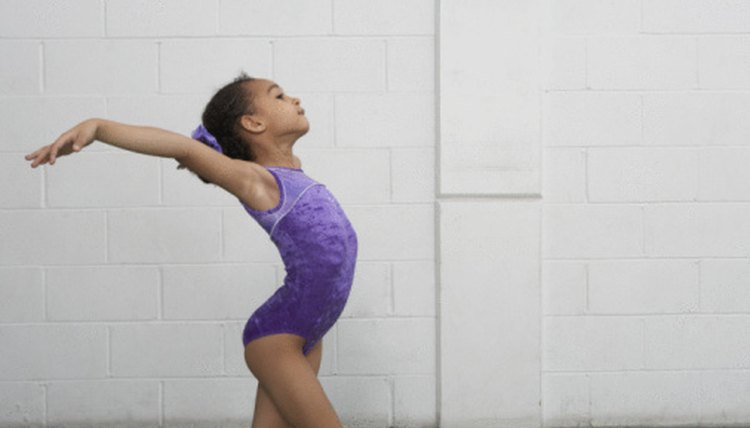Intermediate Gymnastic Requirements

Intermediate gymnastics students have developed the strength and flexibility they need to progress on floor, beam, bars and vault. While each coach and gym may set their own goals for advancement, most gyms move from beginning classes to intermediate based on several key skills. Intermediate classes develop improved strength, grace and flexibility, as well as new skills in each event.
The Basics
At most gyms, progressing from beginning gymnastics classes to intermediate requires the approval and recommendation of the coach or a supervising coach. If you're new to the gym, you may be asked to schedule a time to try out for intermediate classes. Some gyms offer both low- and high-intermediate courses, and may offer intermediate tumbling classes as well as gymnastics.
Floor Skills
Tumbling skills are often a deciding factor for class advancement in gymnastics. Your gym may require a back handspring with or without a spot before advancing or may look for a bridge kickover as students work to master back handsprings. All basic gymnastics tumbling, including cartwheels, one-armed cartwheels, round-offs and back walkovers are essential to advance to intermediate gymnastics. Intermediate gymnasts will learn running combinations, including the round-off back handspring.
Bars
Before moving to an intermediate gymnastics class, young gymnasts must master back and front hip circles and a pullover on the bars. In intermediate classes, these skills will improve and form the basis for more complex bar routines, including tap swings and chinup pullovers. Students will begin to practice release skills, working over a pit of foam blocks for safety.
Beam
Advancement to an intermediate class requires some level of comfort and skill with the 4-inch-wide balance beam. While beginning gymnasts learn to walk, turn and jump, intermediate classes teach students cartwheels and handstands on the beam. You'll find more work done on a high beam, rather than a lower practice beam.
Vault
Vault poses special challenges and requires a slow build-up of skills. Many intermediate gymnasts will not yet have tried a vaulting horse, but will have practiced essential skills, including sprinting and dive rolls. Intermediate students will continue practicing these skills, adding front flips into the pit and may try the vaulting horse for the first time.
Writer Bio
With a master's degree in art history from the University of Missouri-Columbia, Michelle Powell-Smith has been writing professionally for more than a decade. An avid knitter and mother of four, she has written extensively on a wide variety of subjects, including education, test preparation, parenting, crafts and fashion.
